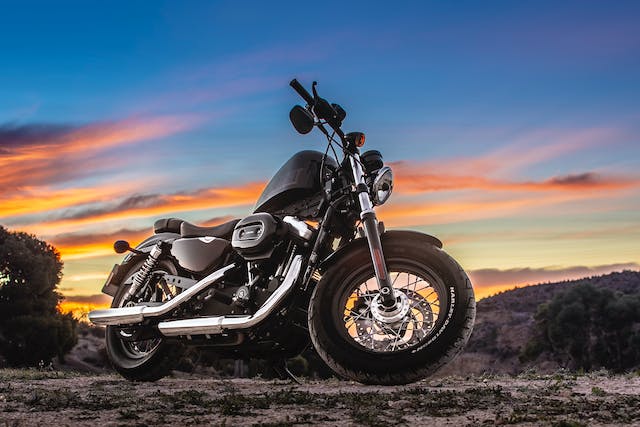There’s a unique sense of freedom that comes with riding a motorcycle—the open road, the wind against your face, and the unobstructed views. But along with the thrill comes a level of risk that necessitates preparation and precaution. Whether you’re a seasoned biker or just starting to explore the world on two wheels, these essential tips will help ensure that your motorcycle journey is as safe as it is exhilarating.

Gear Up for Safety
Safety gear is not optional. Investing in high-quality apparel designed for motorcyclists can protect you from the elements, road rash, and injuries. You should opt for:
- Helmet: Choose a DOT-approved helmet that fits snugly.Customize them as you would with decals for your lacrosse helmet.
- Jacket and Pants: Wear abrasion-resistant clothing, such as leather or reinforced synthetic fabrics.
- Gloves: Your gloves should allow for grip flexibility while providing protection.
- Boots: Invest in sturdy boots that cover your ankles.
Perform Pre-ride Checks
Before you rev up your engine, a thorough inspection of your motorcycle is critical. This ensures that everything is functioning correctly and helps prevent avoidable issues on the road.
- Tires: Check for proper inflation and tread wear.
- Controls: Ensure that all levers, pedals, switches, and cables operate smoothly.
- Lights and Signals: Confirm that headlights, brake lights, and turn signals are in working order.
- Fluids: Check oil, coolant, and brake fluid levels.
Plan Your Route
Mapping out your route not only saves time but also prepares you for the road conditions ahead. Check forecasts for your path and take the time to familiarize yourself with the route’s traffic patterns, terrain type, and known hazards.
Stay Visible
Maintaining visibility is crucial while riding a motorcycle, as they can often be overlooked in vehicle blind spots. To enhance visibility, opt for bright, reflective clothing or incorporate reflective elements into your gear. Additionally, be mindful of your positioning within your lane to ensure that you’re always within the line of sight of other drivers.
Drive Defensively
Riding a motorcycle demands a defensive approach to ensure your safety and that of others on the road. Here are key ways to ride defensively:
- Maintain a Buffer Zone: Keep a safe distance from other vehicles. The Sarasota motorcycle injury lawyers at Shapiro | Delgado | Hofmann recommend staying a minimum of two to three seconds from other vehicles to have more time to brake or stop before a possible collision.
- Be Observant: Practice scanning the road 12 seconds ahead for potential hazards. This gives you a chance to react early to changes in traffic, road conditions, or unexpected obstacles.
- Ride at Safe Speeds: Adjust your speed for weather conditions, traffic, and the limits of your visibility. Remember, the speed that feels thrilling on an open road can be dangerous in heavier traffic or reduced visibility.
- Communicate with Other Road Users: Use your signals, brake lights, and lane position to make your intentions known. This transparency helps prevent misunderstandings that could lead to accidents.
- Watch for Cross-Traffic: Intersections are particularly dangerous for motorcyclists. Approach with caution, look in all directions and be wary of vehicles that may cross your path unexpectedly.
- Avoid Blind Spots: Stay out of blind spots of other vehicles, particularly large trucks, by either slowing down or moving ahead.
- Assume You’re Not Seen: Ride with the assumption that drivers can’t see you. This mindset encourages proactive riding and reduces the chance of a surprise encounter.
- Practice Emergency Maneuvers: Knowing how to execute a quick stop or an evasive maneuver confidently can significantly reduce the risk of a crash.
- Approach Bends with Caution: Reduce speed before entering a bend, allowing you to adjust your road position if you need to make a sudden stop.
The Dangers of Lane Splitting
Lane splitting, the practice of riding between lanes of slow-moving or stationary vehicles, can be a controversial and dangerous activity:
- Close Proximity: Vehicles are closer together, leaving less room for a motorcycle to maneuver.
- Limited Escape Routes: In tight traffic, your options for avoiding a collision are significantly reduced.
- Driver Surprise: Drivers don’t expect vehicles to pass them in slowed or stopped traffic, which can lead to sudden, dangerous movements.
- Legal Restrictions: Lane splitting is not legal in all regions, so it can lead to traffic violations or more severe legal repercussions if it results in an accident.
By practicing these defensive strategies and understanding the risks of actions like lane splitting, you can enjoy the freedom of the road while safeguarding your well-being.
Take Regular Breaks
Fatigue can significantly impair your riding ability. Taking regular breaks is essential not only for physical rest but also to maintain mental alertness.
Plan for rest stops before you get tired, especially on long rides.
Hydrate and Nourish
Stay hydrated and eat healthily. Dehydration can sneak up on you, affecting concentration and reaction times, while proper nutrition will help keep your energy consistent throughout your ride.
Travel Light but Prepared
Packing light makes handling easier, but don’t leave behind essential items.
- Toolkit: Carry a basic motorcycle toolkit for on-the-go repairs.
- First-Aid Kit: Always have a basic first-aid kit handy for unexpected injuries.
- Emergency Contact Information: Keep this information on you at all times.
Get Trained and Stay Informed
Staying informed and continuously enhancing your riding skills is integral to being a responsible motorcyclist. Consider enrolling in motorcycle safety courses, irrespective of your experience level, as these programs offer valuable insights and techniques that can enhance your riding proficiency. Additionally, staying abreast of current traffic laws and safety recommendations is crucial.
Know Your Limits
Ride within your comfort zone and ability. Pushing beyond your skill level can lead to dangerous situations.
Motorcycle journeys offer unparalleled adventure, but they come with their own set of challenges and responsibilities. By following these tips, you not only respect the journey but also the machine you’re riding and everyone else sharing the road with you. Gear up, plan, and stay sharp; the road awaits your respectful and ready presence. Enjoy the ride, and ride to enjoy many more journeys ahead.



